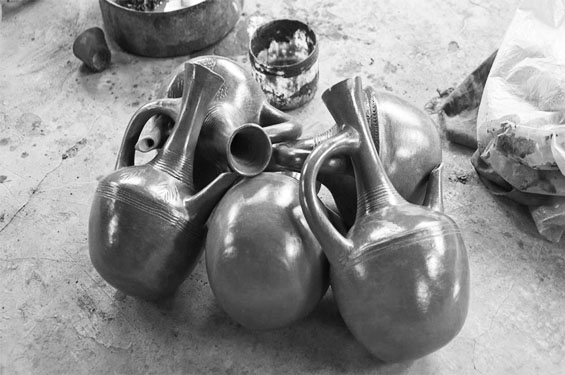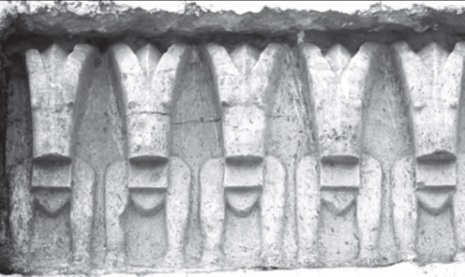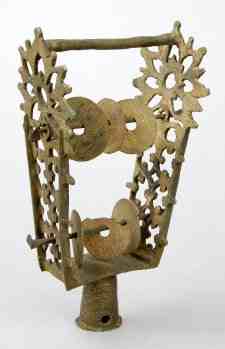
Do not disregard the artisans for the materials they produce; and you use them in your day-to-day activities at home and in farmland. This was uttered by Emperor Menelik-II a century ago to let the communities honor the vocation and give due respect for the professionals engaged in the sector.
In Ethiopia, pottery making has a longstanding history. As various studies indicate and the varied potsherds unearthed in archeological explorations suggest, Ethiopians residing in various parts of the country have been producing potteries. The communities, in their respective areas, have been producing clay made household utensils as a means of survival and household revenue.
For instance, in southern Ethiopia, pottery remains were discovered in different localities including in Yabello Town, at the area customarily known as Wofi.
Similarly, an archaeological excavations conducted in K‘aaba and Bel K‘urku‘mu sites in Benishangul Gumuz state, western Ethiopia and in the sites of Lake Basaka in eastern Ethiopia also confirmed the age-old production of pottery in Ethiopia.
Even these days, the art of pottery making is prevalent in many parts of the country in organized manner and at individual level. Kechene Women’s Pottery Cooperative is a living testimony in this regard.
The Cooperative, located in Addis Ababa, around Kechene Medhaniyalem Church, far-off of the main road- was established in 1991 by organizing 89 women through the support of the International Labor Organization (ILO) and The United Nations Development Program (UNDP).
The Cooperative was setup to make women self-employed and enable them generate income, improve their own and families’ livelihoods thereby preserve the tradition.
According to Getenesh Melese, Cooperative’s salesperson, the women produce a number of artistically designed, painted, decorated and varnished clay objects and supply to customers. Pots, jebenas (coffee kettles), candleholders, incense burners, ovens and bowls, flower vases and planters with various types, shape and sizes as well as sculptures of animals (hens, lions, giraffes, zebras, monkeys) are few among the many eye catching items produced by the women,
Currently, publics’ attitude for cultural handmade products is improving and the communities have started using artistically designed and made clay products for different occasions. For instance, in various buffets, people choose to serve cultural cuisine with traditional bowls instead of industrialized products [made of aluminum or steel]. Even food prepared with the handmade clay potteries has special taste. Due to this, the demand for traditional crafts are gaining acceptance”, she remarked.
“We sell our products for both foreigners and local people with reasonable prices. Business people engaged in pottery and souvenir businesses purchase our products, coming directly to the center. We also exhibit varieties of potteries once in a month at the Evangelical Church located around Sar Bet; and sell the goods there too. However, for the time being, we have discontinued displaying the items following the Coronavirus pandemic.”
As Getenesh uttered, the pandemic has impacted their business negatively. Tourists who have been visiting their workplace and collecting their products have stopped coming. Even the number of local people has declined. This, in turn, is decreasing their income hugely.
Tsigenesh Wolde is member of the Cooperative and one of the potters. She is happy in her job and grateful for the money she earned from the sales of the potteries. “We are generating our own income and supporting our families,” she said with a voice overwhelmed with pleasure.
As to her, the production and use of potteries has been practiced for many years and has reached at this point in time passing down from generation to generation. To sustain this traditional knowledge and skill, some members of the Cooperative coach their young ones the art. Some of the children have already involved in the activities though they are few, she reiterated.
While talking the major challenges of the Cooperative, Tsegenesh said that the unavailability of additional showrooms and shops where they can display and sell their products has limited their capacity and income. Even if they have begun the business some years ago, they could not open other shops in different parts of the capital. Thus, they could not reach out other customers as they desire.
The other challenge for them is that eventhough they produce high quality, competitive, stylish clay products that are greatly adored by foreign customers, they could not get the exposure to penetrate into export market and generate substantial income. “The government and concerned bodies should work the appropriate promotional works and provide the necessary support in this regard,” she opined.
The Cooperative which was established with 89 potters has now only 20 members. As they uttered, the number of members has declined due to various reasons including moving to another businesses.
Needless to say that such work of craftspeople apart from being source of income, it has irreplaceable role in promoting national and cultural diversity. If the sector is promoted accordingly, it, unquestionably, generates significant amount of hard currency for the country.
Recently, the Addis Ababa City Mayor Engineer Takele Uma visited ‘Enesera Pottery Center’- a new center which is expected to be operational before long- to evaluate its progress thereby encouraging producers.
This though is an encouraging move; much work is ahead to promote the sector and preserve it.
As the old adage goes “A creative adult is the child who survived. The potters are endeavoring to train their offspring to transfer the skill and sustain the culture.
However, merely the effort of the women could not yield the desired outcome. Equally, the government and stakeholders should create some kind of supportive mechanism such as incentive package and skill developing trainings to attract more people (especially the young generation) to the sector.
The Ethiopian Herald May 17, 2020
BY STAFF REPORTER





